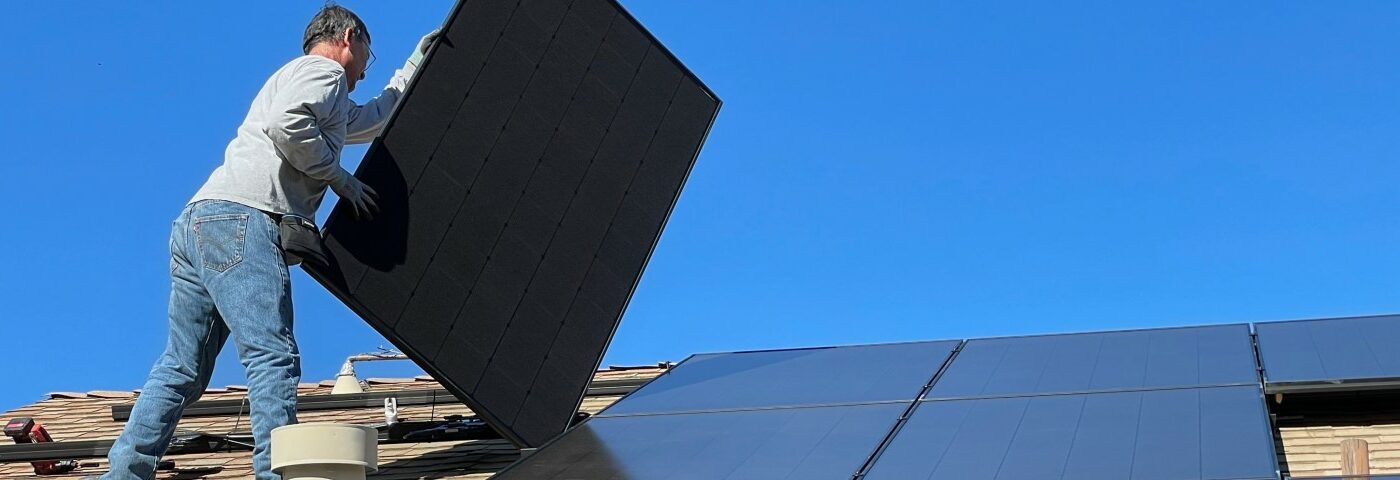Key Highlights
- UK households are sensitive to high energy bills due to wholesale market volatility.
- According to "Value of New Build Solar," solar PV with a co-located battery energy storage system (BESS) might boost UK savings.
- A mid-terrace house with photovoltaics (PV) and a battery energy storage system (BESS) designed to the Future Homes Standard 2025 may save its owners £40,000 during its lifetime.
- Solar Energy UK modelled detached, semi-detached, and end-of-terrace homes to estimate how much money solar energy with batteries could save.
- The Environmental Audit Committee aims to study how solar energy and battery storage might help the UK become carbon neutral.
The volatility of the wholesale market has made households in the UK sensitive to the high cost of energy bills. As they prepare to enter the more frigid months of winter, this has given them another reason to be concerned.
According to the report, "Value of New Build Solar," solar photovoltaic with a co-located battery energy storage system (BESS) might enhance savings across the board in the United Kingdom, proving its value in both using renewable energy and reducing the cost of electricity.
Harnessing Solar Energy
When built to the standards of the Future Homes Standard 2025, a mid-terrace house equipped with photovoltaics (PV) and a battery energy storage system (BESS) may, according to Solar Energy UK's calculations, save its owners around £40,000 over the course of its lifetime.
As per Dr. Richard Hauxwell-Baldwin, research and campaigns manager for the MCS Charitable Foundation,
“Harnessing the power of the sun can address many of the questions raised by the energy crisis – how do we keep warm without breaking the bank, reach net zero, cut bills and bolster energy security?
“On top of the obvious environmental benefits of installing solar, this timely report illustrates why it makes financial sense to make solar standard for the new homes that the country needs.”
Backing the Value of New Build Solar analysis, Stuart Elmes, founder and chief executive of Viridian Solar has stated that “This timely analysis from Solar Energy UK clearly demonstrates that solar is a key enabling technology for the transition to electric heating—mitigating the extra running costs for residents. Solar is crucial for the delivery of the Future Homes Standard.”
The Path to the Future Homes Standard
According to the Future Homes Standard 2025, the quantity of carbon emissions emitted from newly constructed buildings must be decreased by at least 70 to 80 percent compared to their current levels. This is to meet the standard's goals. Solar energy and battery energy storage systems (BESS) stand out as two of the most promising technologies that could contribute to a reduction in atmospheric carbon dioxide levels.
Heat pumps are another option that might be implemented to cut carbon emissions.
Solar power can bring about significant savings in money and advantages for a wide variety of building types, not just mid-terraced buildings. Buildings with mid-terraced roofs are one example of the kind of structure that might profit from solar energy. Solar Energy UK modelled detached homes, semi-detached homes, and an end-of-terrace home owned by a housing association to estimate the amount of money that could be saved by using solar energy with batteries. This was done to determine how much money could be saved by combining solar energy with batteries.
- Mid-terrace Homes
A mid-terrace home can save £40,000 compared to a property without energy efficiency measures. Heat pumps could increase these savings.
- Detached homes
In the best-case scenario, detached houses with solar thermal, solar PV, and BESS will save between £2,000 and £3,000. Solar Energy UK estimates lifetime savings of £202,000 to £242,000.
- Semi-detached homes
Depending on the heating system used in a semi-detached house in Scotland, annual savings might range from £3,000 to £4,000. This case study was formerly used inefficiently, with the panels pointing east-west rather than south.
- Housing association end-of-terrace home
A housing association would share the savings from a socially rented London end-terrace with the landlord and tenants. Solar Energy UK says landlords and tenants will have more trust in a tenant's financial stability if surplus power is exported to the grid. Residents might save £496 to £772 in the first year.
At the beginning of November, the House of Commons launched a probe into the cost-effectiveness of solar energy and associated energy storage, prompting Value of New Build Solar to launch an investigation of its own. The Environmental Audit Committee has stated that it plans to investigate the role that solar energy and battery storage could play in helping the United Kingdom reach its goal of becoming carbon neutral. To get these technologies off the ground, the government has granted several grants and subsidies. Together with this, the Committee will assess supply chain challenges and grid connections, as well as legislative, technical, development planning, and other barriers to expanding both small and large-scale installations.
Whether you have previously participated in All-Energy & Dcarbonise, or are joining us for the first time, we look forward to seeing you in Glasgow in 2023

